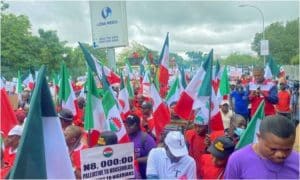Seven Worst Post-World Cup Signings

The World Cup has given many players the opportunity to establish themselves as global superstars.
A cameo appearance by some players on football’s biggest stage as landed a career-defining move to the best clubs around the world.
Following the World Cup tournament, some brilliant signings have been made by some powerhouses, such as Real Madrid, Chelsea, Manchester United, and even Liverpool.
The majority of them have also made the mistake of signing players who failed to live up to their potential after a few standout international performances.
Despite the fact that scouts will be paying close attention to outstanding players in Qatar, Naija News highlights some of the worst signings made by big clubs in the past.
Denilson from Sao Paulo to Real Betis in 1998
When Denilson’s signing was completed by Real Betis for a record-breaking fee of £21.5 million following the 1998 World Cup with Brazil, it was expected that he would be a success in Spanish La Liga.
However, things did not go as expected, and it’s possible that the high price tag played a significant role in his decline in performance.
The Brazilian played for Betis for seven years and made almost 200 league appearances, but he was never able to match the exceptional performance he displayed in 1998.
El Hadji Diouf from Lens to Liverpool in 2002
Liverpool announced the signing of Senegalese striker, Diouf, a day after he helped Senegal shock World Cup holders France with a 1-0 win on the opening day of the 2002 tournament.
However, it was reported that Liverpool have been eyeing the Dakar born striker before the World cup, but his outstanding display triggered the signing and gave the fans more reasons to be excited.
However, before joining Bolton Wanderers in 2004, Diouf struggled to win over fans with his poor play, scoring just six goals in his debut season and none the following year.
Salif Diao from Sedan Ardennes to Liverpool in 2002
After Senegal’s impressive World Cup 2002 run to the quarterfinals, Diao became another player signed by Liverpool from an African country.
Diao, who cost Gerard Houllier £5 million, frequently played positions other than his preferred midfield position, under the manager.
Although, he was playing in his proper position when Rafael Benitez took over in 2004, but the Senegalese made a number of errors that led to his loan to Birmingham City in January 2005.
Kleberson from Atletico Paranaense to Manchester United in 2003
Brazil’s head coach as at that time, Luiz Felipe Scolari, praised Kleberson as one of the best players who contributed to his country’s success at the World Cup. Sir Alex Ferguson fell for this and signed the player from Atletico Paranaense, who was introduced to the fans alongside Sporting Lisbon’s Cristiano Ronaldo.
Ferguson erred on this one as the Brazilian had a difficult time adjusting to the English game and only made 20 appearances over two injury-plagued seasons.
Andreas Isaksson from Rennes to Manchester City in 2006
Isaksson played four times for Sweden at the World Cup before being signed by Manchester City in August 2006.
But due to injuries, the Swedish goalkeeper did not make his debut for Stuart Pearce’s team until December, when he took Nicky Weaver’s place in the Manchester derby against Manchester United.
In total, he made just 14 appearances in the Premier League that season before his subsequent appearance in February.
To make matters worse, Isaksson was humiliated 8-1 by Middlesbrough in his final match wearing the City jersey on the final day of the season.
Asamoah Gyan from Rennes to Sunderland in 2010
Gyan became one of the faces of the 2010 World Cup thanks to his outstanding performances, which, prior to his transfer to Sunderland, helped Ghana advance to the quarterfinals.
But Sunderland was just not deterred and spent a club-record £13 million to sign him. Gyan had a difficult time at Sunderland, where he only stayed for one season before moving on loan to Al Ain of the United Arab Emirates, where he became a permanent player in January 2012.
James Rodriguez from Monaco to Real Madrid in 2014
The Colombian had a successful first season in France with Monaco and was already well-known throughout Europe before the tournament.
However, the competition in Brazil only served to further his reputation, and no one would have predicted that he would outperform every competitor there.
Although Rodriguez’s first season saw him score an impressive 13 LaLiga goals in 29 appearances, his initial promise quickly faded due to poor form and injuries, which ultimately led to his fall from grace at the Bernabeu.
Nevertheless, Los Blancos kept taking a chance on Rodriguez; the Colombian spent two years on loan at Bayern Munich and one year at Everton.
This article was originally published on Naija News









